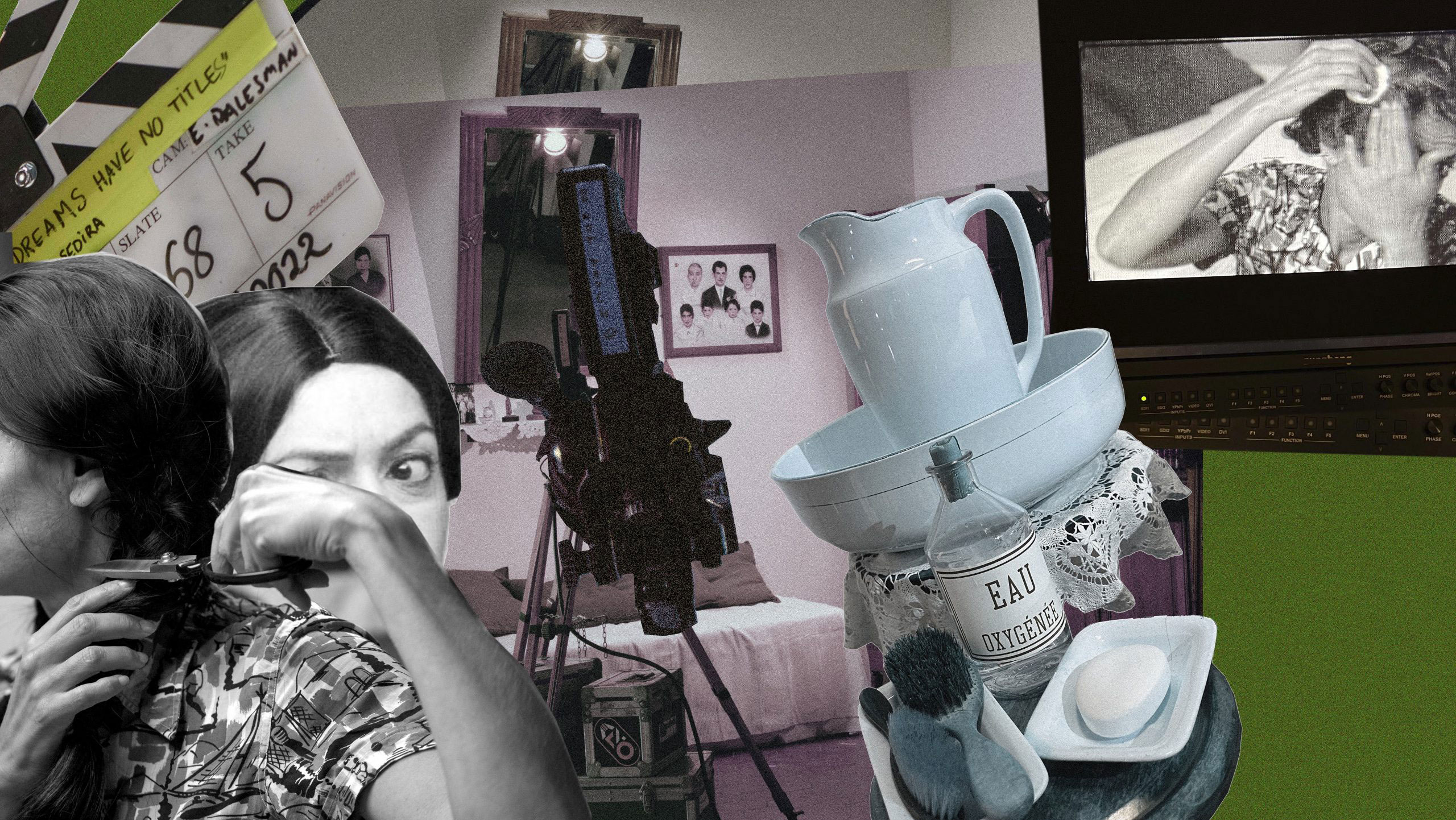Come Dancing: Zineb Sedira at Goodman Gallery
Let the drums beat! It is an imperative phrase, a declaration, a demand for drums—and by extension, dancing. To many, the title of Zineb Sedira’s recent solo exhibition at Goodman Gallery likely calls to mind the call of music. “You got to jump up to the beat, stand up on your feet,” implored Debbie Harry with frenetic fervor in the title track for Blondie’s 1979 album Eat to the Beat, beckoning listeners to get down and cut a rug. But Sedira’s title is more than just musical. It is also a battle cry. For drums are a call to war as well as the dance hall. Drums, more resonant than the human voice, have throughout history been used by military forces to communicate to soldiers far down the battlefield: prepare, advance, retreat.
The drums that beat in Sedira’s exhibition are the drums of revolutionaries, particularly Algeria’s National Liberation Front, which successfully decolonized the country in 1962 after over a century of French rule. Let the drums beat! exults in the utopian optimism that guided so many of the resistance movements that blossomed in both the Global North and South throughout that watershed decade, the 1960s. At the center of the exhibition is the film Dreams Have No Titles, wherein Sedira blurs the boundaries between fact and fiction as she recreates iconic scenes from activist films such as The Battle of Algiers (1966) while narrating stories from her own life in voice-over. These scenes are spliced with conversations filmed in Sedira’s living room, which is replete with mid-century modern furniture, its bookcases bursting with LPs. As the credits roll, the filmmaker shimmies on a soundstage in a Day-Glo yellow shift dress, her hair beehived, her limbs moving to the beat of Charles Wright’s R&B hit “Express Yourself.” Sedira’s nostalgia for the aesthetics and politics of the 1960s is seemingly unfettered: joy is the prevailing affect here. The exclamation point that closes the exhibition’s title insists on celebration.
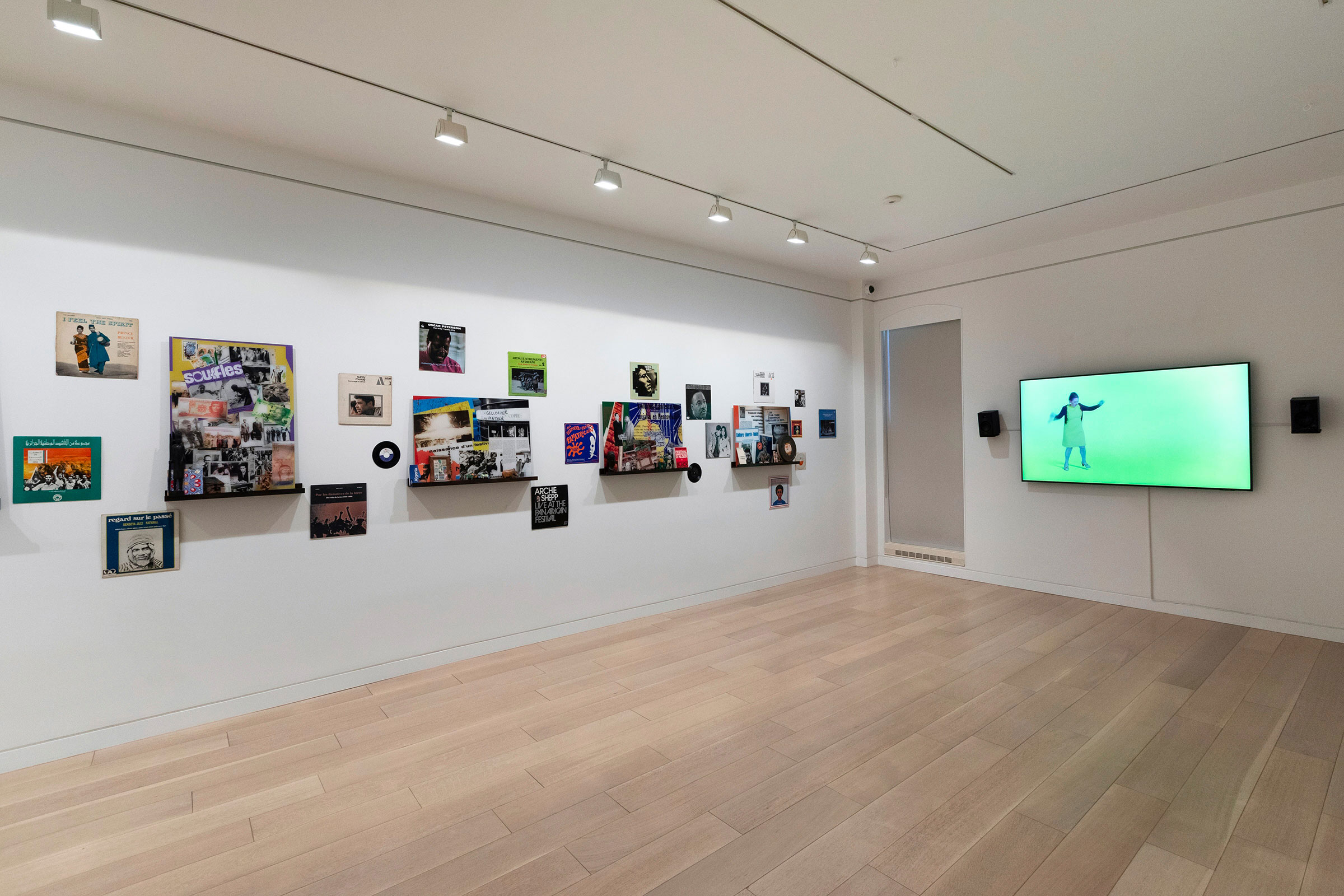
Yet violence also looms in Sedira’s marriage of music and military might. Beat turns into beating all too easily. In one clip of archival footage included in Dreams Have No Titles, a shirtless man faces the camera as another man castigates him via voiceover: “Take off your clothes, Algerian.” He is framed in black-and-white close-up, reminiscent of Warhol’s famous Screen Tests. Most of Warhol’s screen tests were silent, marked by an austere glamor that turned them into iconic artifacts of the American avant-garde. But in one, an offscreen collaborator, Ronald Tavel, berates the Puerto Rican drag queen Mario Montez by taunting him to reveal what lies beneath his dress. This is the screen test that Sedira’s archival clip recalls. An Artaudian act of cruelty and exposure is at work here, haunted by the legacies of European colonialism. Danger lurks as the dark underbelly of the decade reveals itself. Let the drums beat! extols the virtues of the ’60s, yes, but it also refuses to exculpate it for its vices. The mid-century’s multiple melodies, its successes as well as its failures, are held in equal tension. The resulting composition—to borrow another metaphor from the musical realm—is distinctly contrapuntal, like the Baroque fugues that enchanted so many of the decade’s major songwriters.
⁂
Zineb Sedira’s background is marked by a similar multiplicity. She was born in 1963, in France, to Algerian parents who had recently settled in the Parisian suburb of Gennevilliers. Sedira’s parents were lowercase-r revolutionaries in Algeria, and in Gennevilliers, her father Abdelrahman found a cadre of like-minded working-class men, many émigrés like himself, in an unlikely place: the cinema. A young Zineb would often tag along, delighting in spaghetti westerns and other matinees. These early experiences proved foundational to the future filmmaker, and in her presentation in the French Pavilion at the 2022 Venice Biennale, she recreated the interior of the Gennevilliers cinematheque with great tenderness. But Paris was not without its ambivalences. French nationalism prevailed, despite the horrors of World War II. The emphasis on assimilation became stifling. By 1986, Sedira had left Paris for Brixton, in south London, where she soon became neighbors with the Afro-Caribbean artist Sonia Boyce. The two artists struck up a quick friendship, united by their shared personal experiences as new mothers and their shared professional practices as artists interested in the possibilities of Pan-Africanism.

In Britain, as in France, Sedira never quite fit in, her experiences too multi-hyphenated. “The Brits don’t consider me a Brit,” she says in a recent interview in The Berliner. “I had a dinner yesterday with the director of the Tate Modern, and when they buy my work, it goes into the British collection, not the North African collection. But other people don’t see me as British because I’m dealing with Algeria, which does not quite fit with Britain’s colonial past. I should be more of a British artist, but I have a French passport, not a British one.” Her films straddle similar boundaries—between past and present, between reality and illusion. Dreams Have No Titles opens with a recreation of a clip of Orson Welles in the 1973 film F for Fake. He speaks directly into the camera: “Almost any story is almost certainly some kind of lie—but not this time.” To take Welles at his word is also to rebuke what he says; if we believe him, we deny his claim that almost all stories are lies. But Sedira is interested less in the stories we tell via film and more in the support structures (both technological and political) that allow films to be made in the first place. She embraces the transnational collaboration that generated The Battle of Algiers, which was directed by Gillo Pontecorvo and is as much a product of Italian Marxism and Neorealism as it is a faithful depiction of FLN commander Yacef Saâdi’s 1962 memoir Souvenirs de la Bataille d’Alger.
Dreams Have No Titles is both a love letter and a Dear John letter to the 1960s and early ’70s—to the revolutionary movements that this period generated, as well as the styles that it canonized. And the film most certainly is stylish. An emphasis is placed throughout not just on the function of mid-century technology, but its aesthetics: shabby typewriters and turntables from decades past, encased in layers of peeling vinyl and wood veneer, contrast with the smooth silver surfaces of MacBooks and audio mixers. Early on in the film, we see a friend of Sedira’s sitting in the filmmaker’s living room, reading aloud from a copy of A Dying Colonialism, Frantz Fanon’s treatise on the Algerian War. The design of the blue-and-yellow book jacket is decidedly retro, its pages clearly worn. This is not a contemporary reprint but an original edition from 1970. Sedira’s edition choice stresses the importance of the book-as-object, as an artifact from a particular time and place.
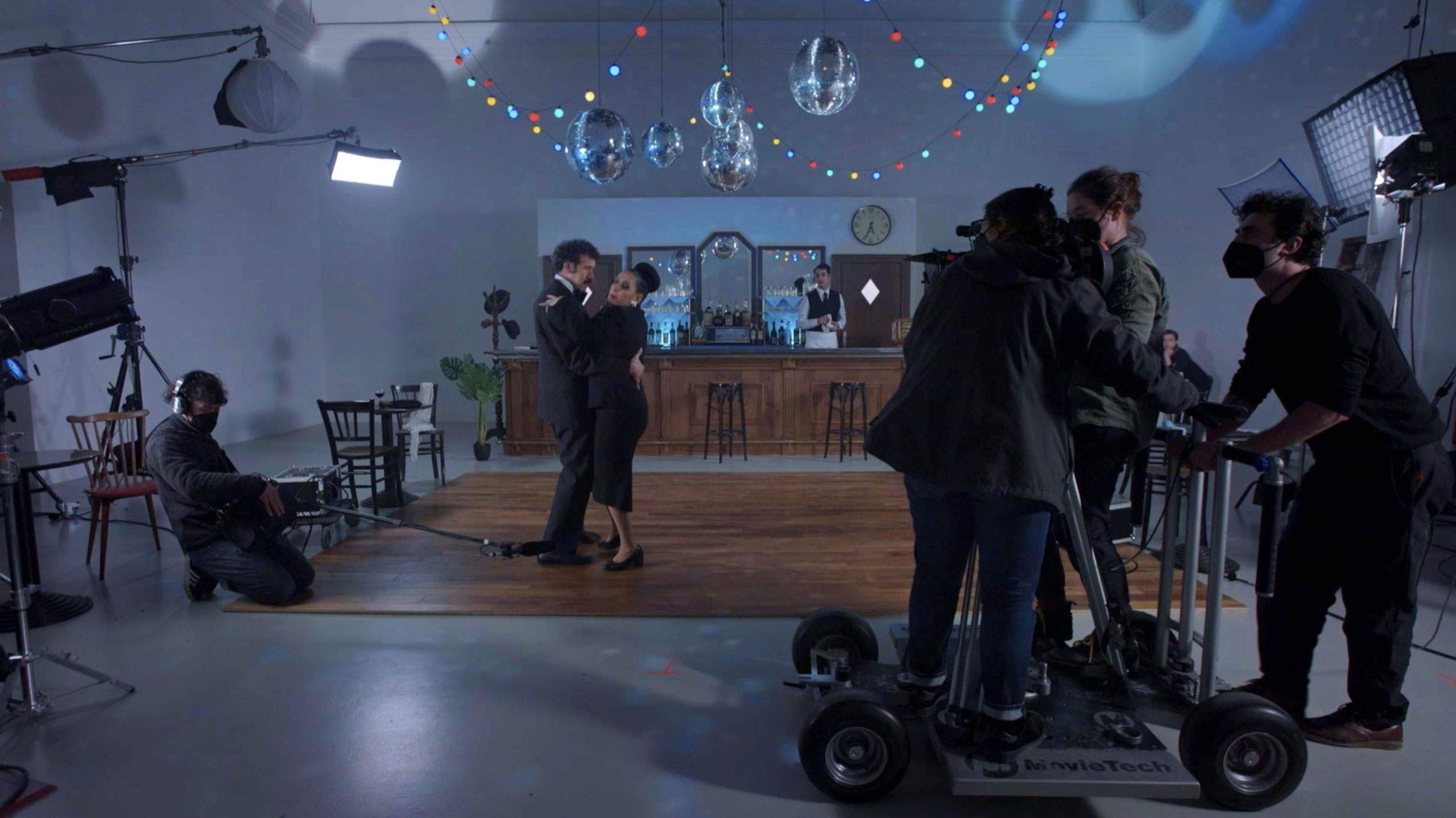
So, too, are the bodies in the film stylized with a ’60s flare. There’s the beehive hairdo that Sedira dons in the film’s closing credits, and the paisley tunic that her makeup artist wears while prepping her for a shoot. The filmmaker tends to her own aestheticization as well: while recreating a dance floor scene from Le Bal (1983), she looks directly into the camera lens, using it as a mirror to check her lipstick. This attendance to glamour contrasts starkly with another scene in the film, wherein Yasmina Reggad dons a braided black wig only to cut the hair off at her chin, paying homage to a similar moment from The Battle of Algiers. In the original film, an Algerian woman cuts her hair short in order to assimilate; she is emulating the European mode. But in Sedira’s recreation, I sense an affinity with the infamous haircutting close-up in Carl Theodor Dreyer’s La Passion de Jeanne d’Arc (1929). Before she is led to the stake, Renée Jeanne Falconetti, as the titular saint, must relinquish her tresses. Recalling films set in the contemporary moment and in the medieval past, Reggad’s act of wig-shearing highlights the various ways the female body has been made to bend and break in order to conform to the styles of the French state.
Resisting the ethnic violence inflicted by the French occupation, and the cultural conformity imposed en suite, Sedira’s exhibition aligns itself with a different ethos: Pan-Africanism. Her citation of Fanon reminds the viewer of an important fact, that support for the Algerian FLN from freedom fighters elsewhere in the French and British colonial empires proved integral to its success. Fanon, who was born in Martinique, served as a delegate for Algeria at the 1958 All-African Peoples’ Conference. Here, representatives of states and movements from throughout the continent came together to demand the immediate evacuation of foreign forces from Algeria, Kenya, and elsewhere. In other contexts, ethnic differences between the Arab North and the Black Sub-Sahara might have placed these delegates on opposing sides. But many of the conference’s leaders were, like Fanon, Marxists who upheld the importance of solidarity, and who saw their struggle against European rule as a shared one. This Marxist emphasis on solidarity is one that pulses through Let the drums beat! and the film that sits at its center. The Battle of Algiers is an important touchstone for Sedira particularly because it was a multicultural venture. “Let’s not forget that The Battle of Algiers was a collaboration between the Global North and Global South,” Sedira tells an interviewer in Ocula, “an Italian-Algerian co-production, a merging of culture, film passions, political, intellectual, and artistic visions, and, of course, friendships.” Hence the filmmaker’s choice to cast her actual friends—the aforementioned Boyce, as well as curator Gilane Tawadros and Moroccan artist Latifa Echakhch—in Dreams Have No Titles. “My project is precisely an homage to this type of cultural or artistic collaboration,” she says.
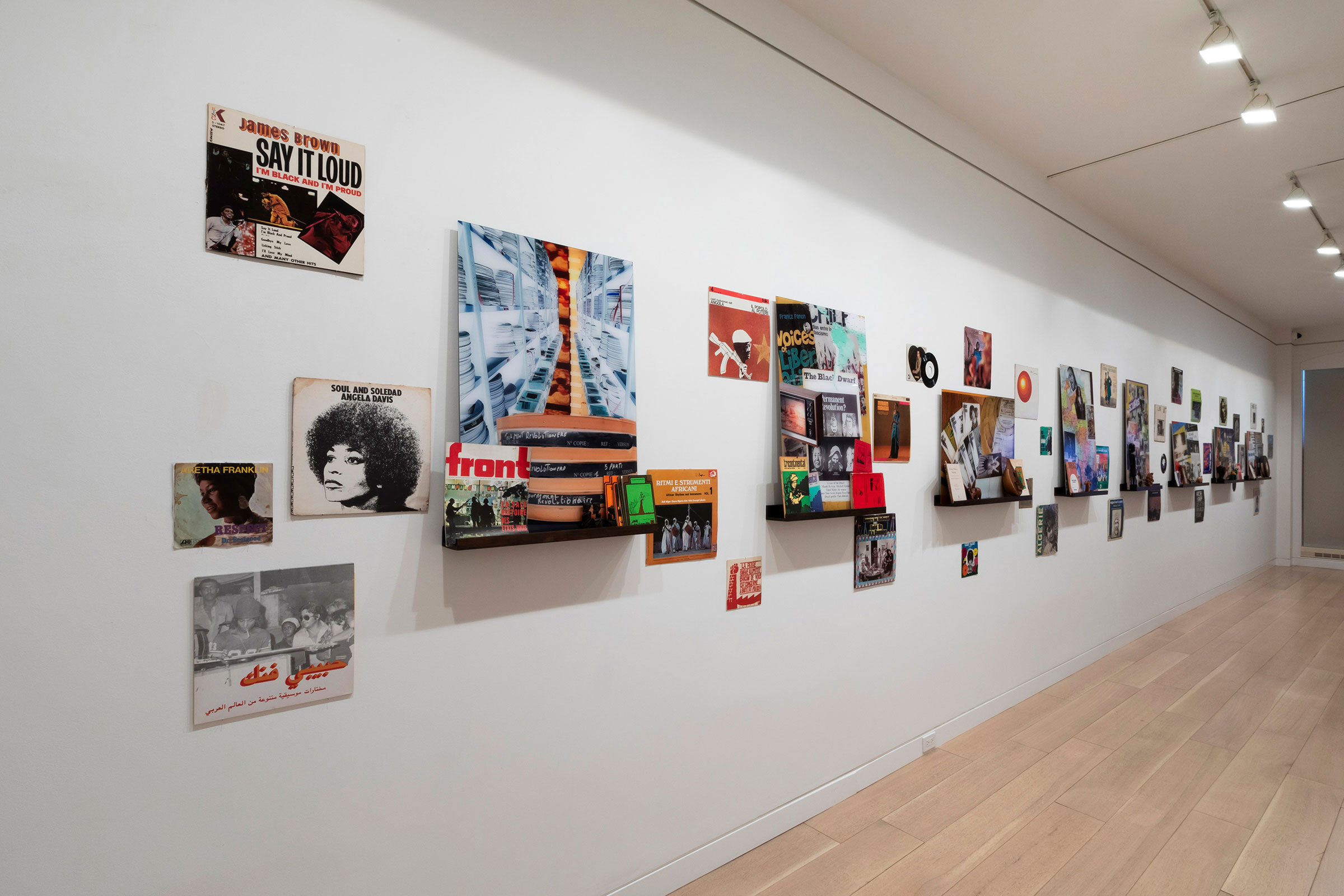
The wall-spanning photomontage installation For a Brief Moment the World was on Fire … and We Have Come Back pays homage to another example of cultural collaboration, the Pan-African Festival. Held in Algiers in 1969, less than a decade after Algeria gained independence, the festival included performances by musicians such as Nina Simone and Miriam Makeba and speeches by Black Panther Eldridge Cleaver and Haitian poet René Depestre, among others. In this collage, Sedira, whose work has long been marked by a sort of compulsive need to collect, brings together archival materials in the form of photographs, newspaper clippings, and other ephemera from the festival. But these festival materials are not the only ephemera on display. There are banknotes and record sleeves featuring the Cuban revolutionary Che Guevara, stressing the FLN’s kinship with movements further afield. There is also an image of Ahmed Ben Bella, the first president of Algeria, shaking hands with Martin Luther King, Jr. under the headline “Ben Bella Links Two ‘Injustices.’” There is something polyvocal about the collage form. Multiple voices come together here, their struggles separated by continents, but still interrelated.
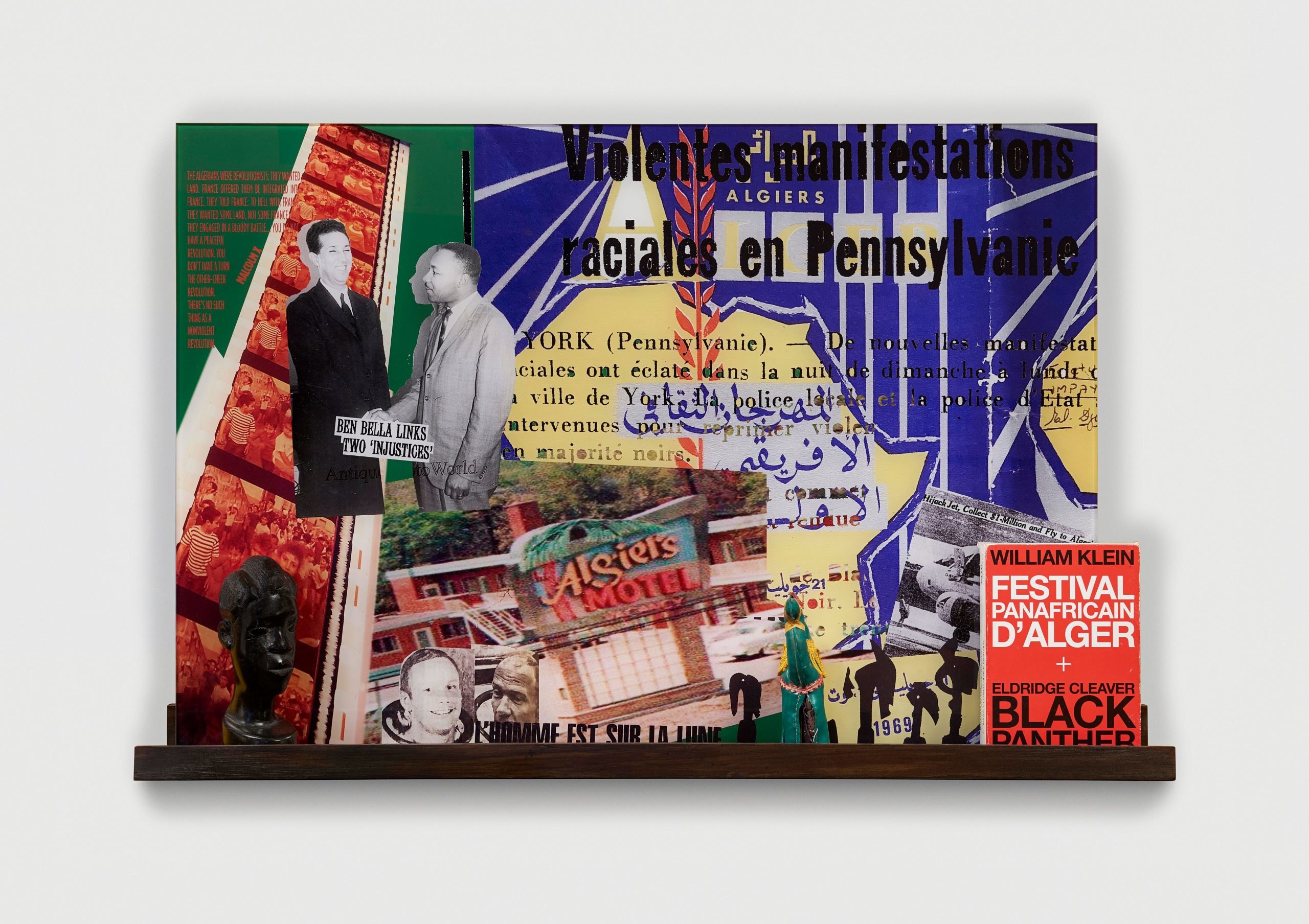
Yet from this emphasis on the mid-century’s multiple narratives, a certain ambivalence emerges. Beneath the image of Bella and King, we see a photograph of a schlocky American lodging called the Algiers Motel. Adorning the motel’s sign are fronds from a palm tree—a lazy signifier for the “exotic,” oblivious to the fact that palms require much more humid environments than Algeria’s desert could provide. Overlaid on the image is a newspaper clipping of Neil Armstrong with the headline “L’homme Est Sur La Lune.” If the ephemera from the Pan-African Festival represent the progressive possibilities of ’60s utopianism, these images represent its dark underbelly. John F. Kennedy’s endeavor to go to the moon, “where no man had gone before,” was as utopian in impulse as Bella’s endeavor to free Algeria of French rule. But whereas Bella’s mission was anti-colonial, Kennedy’s was neo-colonial. The Space Race was a proxy battle between two superstates who believed that, to ascend geopolitically, they must lay claim to territory that was not their own. Expunged from lands that they had previously seized, Northern powers found pernicious new ways to indulge their impulse to conquer. The rise of the interstate system gave affluent Americans the ability to luxuriate in close-to-home vacation spots like the Algiers Motel, while commercial air travel allowed them to visit international destinations like Algeria proper. (Also included in For a Brief Moment is a recent Lonely Planet guide for visiting the country.)
In a review of Sedira’s exhibition of ocean-oriented work, Can’t You See the Sea Changing?, critic Rosanna McLaughlin described the artist’s collection of memorabilia as “charming but twee.” This allegation—that the work is whimsical, fun, but ultimately lightweight—followed Sedira to Venice, where her gleaming recreation of sets from movies like Le Bal felt, to some viewers at least, a bit uncritical and too nostalgic. But Let the drums beat!, despite its exuberance and high stylization, has a lot of grit. The drums in the exhibition’s title, the fire in the collage’s name, both bespeak a sort of aggression. With its myriad viewpoints and refusal of linear narrative, For a Brief Moment constructs a dialectic between the revolutionary movements of the 1960s and its neo-colonial endeavors. If we are to find in the ’60s a chart for how we might create a more just world in the twenty-first century—and this is a belief that Sedira sincerely holds—then we must also grapple with its thornier elements. Here, I can’t help but think of the Shiraz Arts Festival, which was held from 1967 to 1977 in the Fars Province of Iran. Like Algeria’s Pan-African Festival, Shiraz was state-sponsored and expansive. But its politics were quite different: founded by the last Shahbanou of Iran, Farah Pahlavi, it is seen as one of the dying gasps of a monarchy struggling to maintain the goodwill of its people. Shah Mohammad Reza Pahlavi was a despot, accused of human rights abuses and hobnobbing with Western heads of state. The festival, which was a brutally expensive initiative that brought theater artists such as Peter Brook and Robert Wilson to Persepolis, betrayed Pahlavi’s coziness with the West, his disregard for the struggles of everyday Iranians. To this day, stories persist that the festival is what ignited the 1979 Revolution.
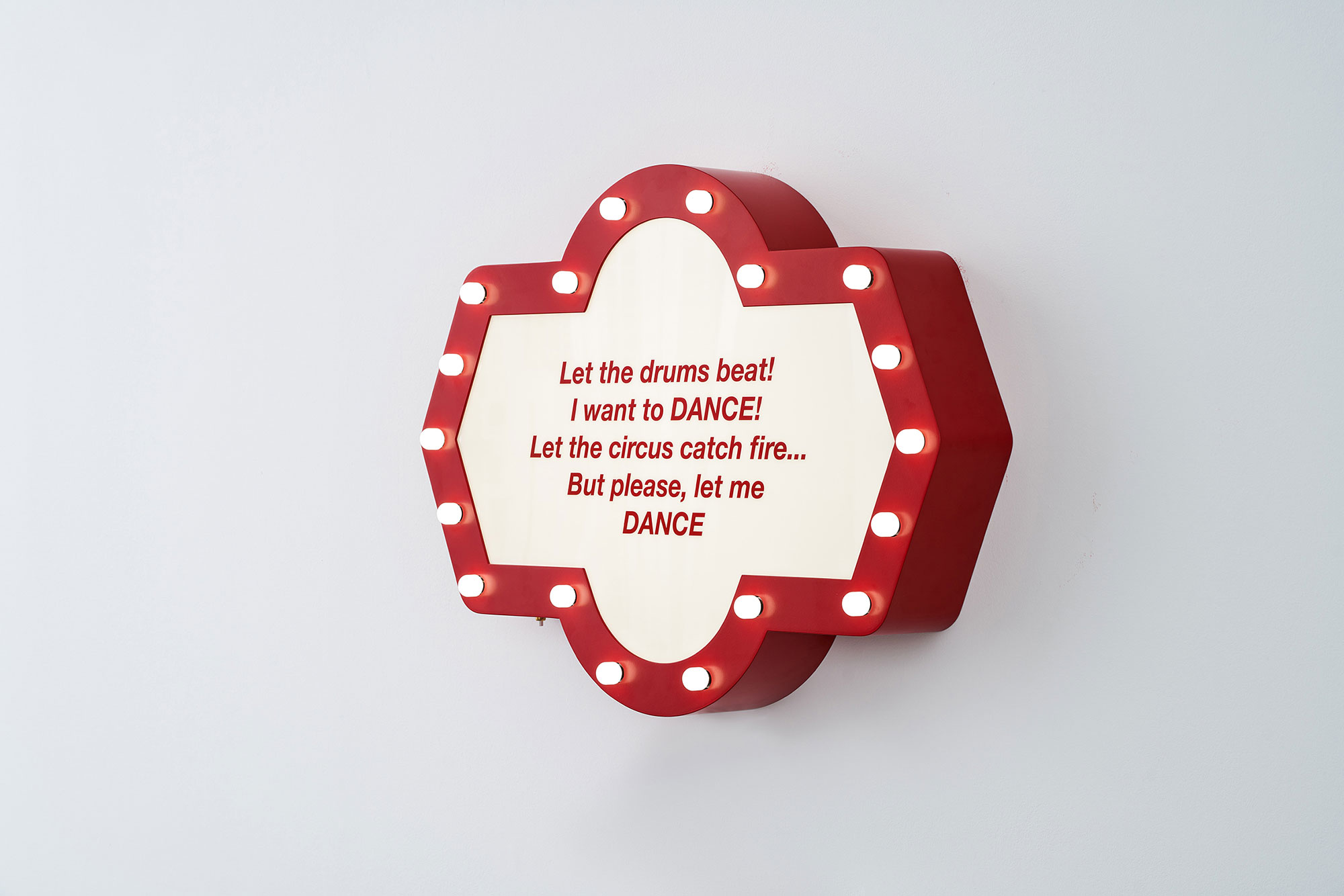
The twin tales of the Pan-African Festival and the Shiraz Art Festival underscore an important fact: art aligns with power just as often as it resists it. And art that speaks truth to power often struggles to find funding or institutional support. Sonia Boyce discusses the difficulty of exhibiting Black art in British contexts in Dreams Have No Titles, while Sedira met calls to withdraw from the 2022 Biennale following allegations by right-wing French publications that she supports the Boycott, Divestment, Sanctions (BDS) movement. In the face of such inequities, then, how do we recover the revolutionary possibility of the 1960s? The answer, Sedira’s exhibition seems to imply, might be found in music. Punctuating the For a Brief Moment collages are a series of record sleeves, the only stand-alone objects in the piece. As Boyce and her compatriots converse in Dreams Have No Titles, the camera zooms in on the records that accumulate on Sedira’s shelves. Throughout the film, we see close-up shots of soundboards and turntables, as well as seeming non-sequiturs such as a domestic dance party and a brief scene of Sedira playing in a garage band. Music, as critic Paul Gilroy argues, has an uncanny knack for breaking the bounds of national borders. Sonically slippery, it bleeds and exceeds. Because it is intangible, it is also difficult to destroy or steal. Forced from their homes and denied any personal effects, enslaved Africans who traveled the Middle Passage could at least bring one thing with them: song.
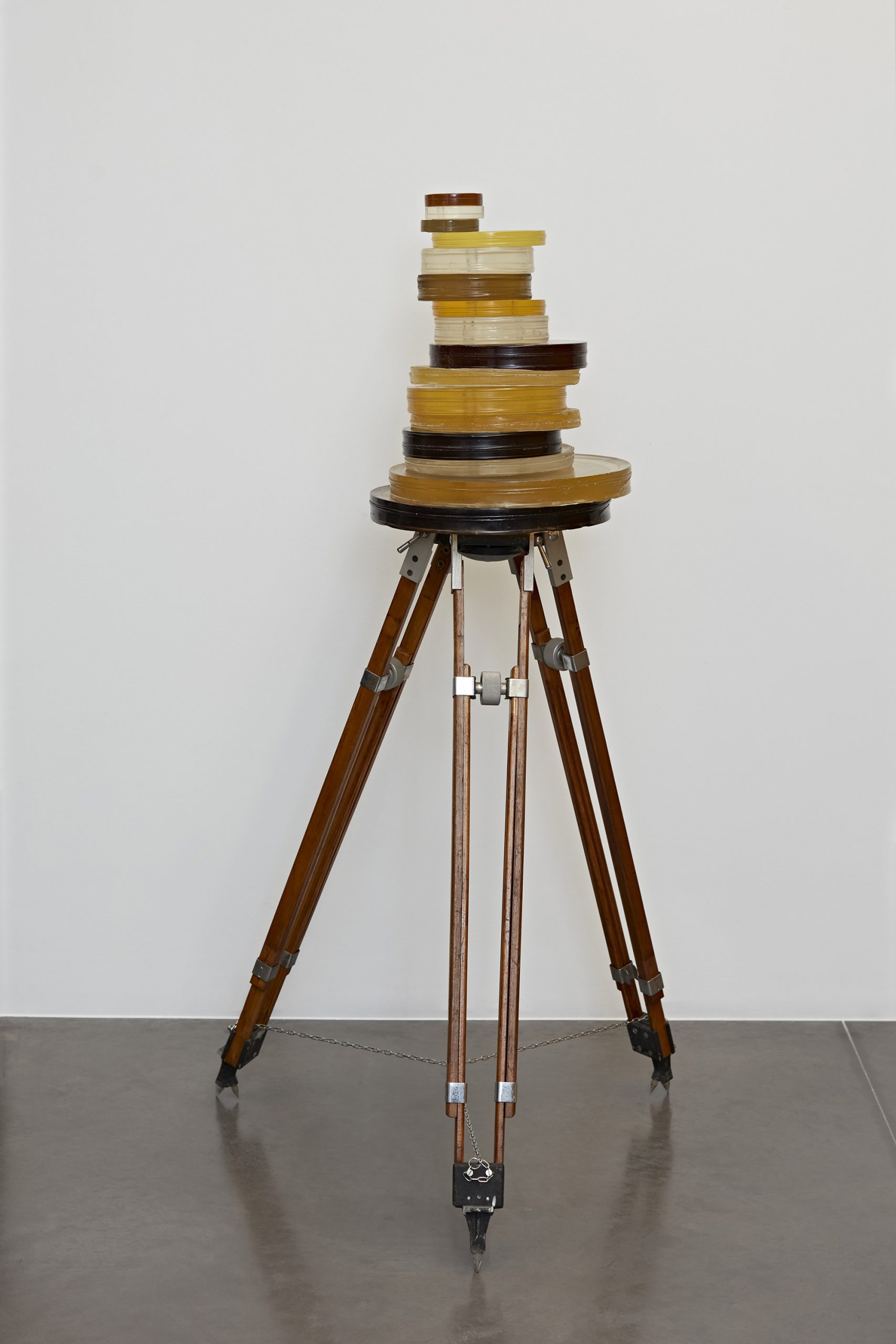
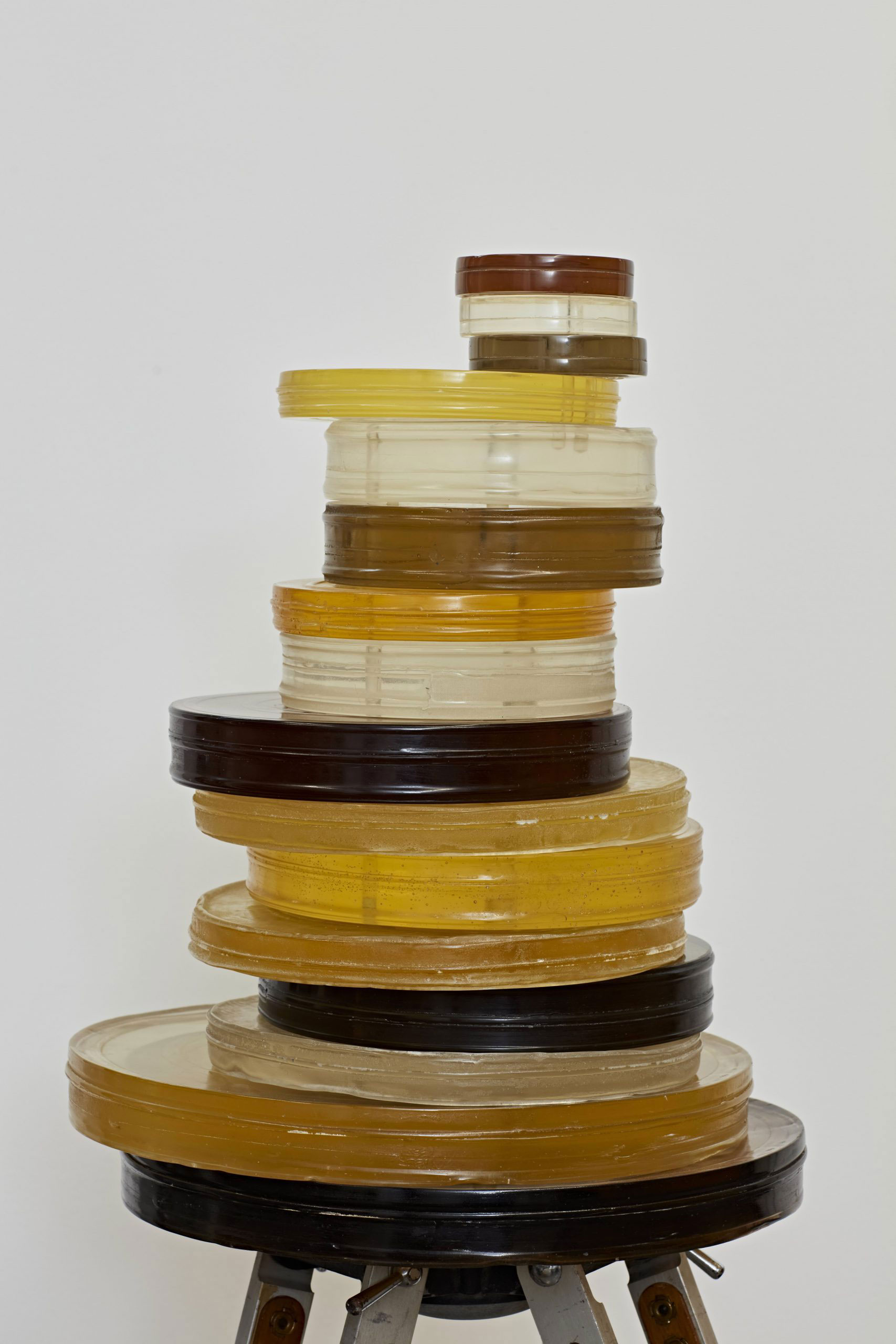
Music has the capacity not just for polyvocality, but for virality. In Ishmael Reed’s 1972 novel Mumbo Jumbo, a virus emerges in 1920s Harlem called “Jes Grew.” The virus is a dance craze, a personification of the revolutionary power of ragtime and jazz. As it spreads, it threatens to overtake the Wallflower Order, an international conspiracy dedicated to monotheism and control. For revolutions to take hold, replication and accumulation are necessary. Mass movements require literal mass. Hence, perhaps, why Sedira’s collages are filled to the brim with stuff, resisting diminishment or obsolescence. Moments of accumulation abound in Dreams Have No Titles. Toward the end of the film, we see a stack of papers bearing the repeated phrase “Soy Cuba” (a reference to the 1964 Soviet-Cuban film Yo Soy Cuba) fly into the sky. We also see towers of film canisters in a vault, which are replicated as resin sculptures in the exhibition. Resin is an intriguing material: it is obdurate and long-lasting, contra the degradability of film. But it is also volatile. Though secreted to protect plants and insects after injury, it is dangerous to humans when airborne, causing respiratory illness. Sedira’s endorsement of utopia is never unqualified—it is always aware of risk.
⁂
Resin resonates personally with me in one particular way: it makes me think of the blocks of rosin I would use as an adolescent to add grip to my cello bow. Fresh horsehair, run across the steel strings of a cello or violin, creates little sound. It is too smooth of a fiber. Rosin roughens up the bow, providing the resistance necessary to make music.
I end with this anecdote as a segue into a confession. Much of what I have written above is heavily shaped by my own cathexis to the 1960s. Peer through my closet, peruse my record shelf: you’ll find a cornucopia of color-blocked shift dresses and 45-rpm singles penned by Holland-Dozier-Holland. These personal attachments are a large part of why I am drawn to Sedira’s work. As is true for her, my delight in the period’s aesthetics cannot be separated from my continued investment in its revolutionary politics.
Sedira engages in similar acts of self-insertion throughout Dreams Have No Titles. She uses chroma-key technology to place footage of herself into a scene of Algerians disembarking from a train car in The Battle of Algiers. At another point, in a moment of mise-en-abyme, she places a small cut-out of herself into a miniature model of her living room, with her flesh-and-blood hand seen hovering overhead. Much of Sedira’s work is concerned with the phenomenon of why we cathect to the things we cathect to. With the Gennevilliers cinematheque as her lodestar, she valorizes the ways our personal experiences allow us to find our way into the political. “I truly believe we need to go back to those radical political alliances and shared experiences to better move forward,” she says. “Hence my interest in the archive: to expose, reconsider and challenge history. It is necessary to examine both private and personal archives. There are many of them when you look for them.”
Elizabeth Wiet is a writer, editor, and curator based in New York. Interdisciplinary in both method and scope, her research focuses on feminist and queer art, time-based media, and art from the Middle East and its diasporas. She is currently Director of Exhibitions and Fellowship at A.I.R. Gallery, Deputy Editor at Topical Cream, and Contributing Editor at Bidoun. She is in the process of completing a book manuscript, tentatively titled Maximalism: An Art of the Minor, based on her doctoral dissertation, and with Bidoun, is editing the first monograph on Lebanese-Egyptian artist Nicolas Moufarrege.
